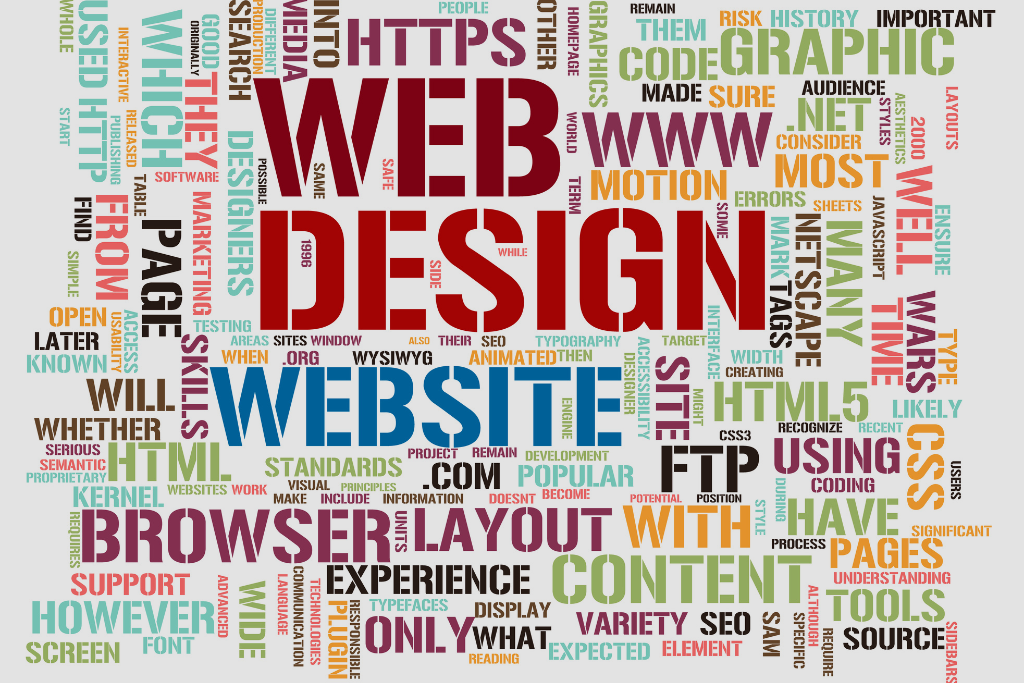In today’s digital landscape, the success of any website hinges not just on functionality but on how users experience and interact with it. UX/UI design has emerged as a critical factor in determining whether visitors engage with your content or bounce away in frustration. This comprehensive guide explores the crucial role that user experience and user interface design play in web development, examining how thoughtful design decisions impact everything from user satisfaction to conversion rates. By understanding the principles, processes, and importance of UX/UI, businesses can create digital interfaces that resonate with their audience and drive meaningful engagement in an increasingly competitive online environment.

Understanding UX and UI: The Foundation of Effective Web Design
What is User Experience (UX) Design?
User experience design focuses on creating meaningful and relevant experiences for users. It encompasses the entire process of acquiring and integrating a product or service, including aspects of branding, design, usability, and function. UX designers work to improve user satisfaction by enhancing the usability, accessibility, and pleasure provided in the interaction between the user and the product. They prioritize human users throughout the development process, conducting research to understand user needs and behaviors.
What is User Interface (UI) Design?
User interface design is the process of creating interfaces in software or computerized devices with a focus on looks or style. UI designers are responsible for the visual elements users interact with – from buttons and icons to typography and color palettes. They create the graphical user interface that allows users to effectively interact with digital products. UI design is crucial for creating positive user experience through aesthetically pleasing and intuitive designs.
The Symbiotic Relationship Between UX and UI
While UX and UI are distinct disciplines, they work in tandem to create successful solutions for digital interfaces. UX design determines how the interface works and how users interact with it, while UI design focuses on how the interface looks. Both are essential components of the product experience, and neither can stand alone. As Michal Malewicz, a renowned design professional, once pointed out, “UI without UX is like a painter slapping paint onto a canvas without thought; UX without UI is like a frame without a painting.”
The Strategic Impact of UX/UI on Business Success
Enhancing Customer Experience
Well-designed interfaces directly impact how customers perceive and interact with your brand. Intuitive navigation, responsive design, and thoughtful interactive elements contribute to a positive user experience that builds trust and encourages engagement. When users can easily find what they’re looking for and complete actions without frustration, they’re more likely to return and recommend your site to others.
Driving Conversion Rates and ROI
Studies consistently show that investing in UX/UI design yields significant returns. A thoughtful design-centric approach can lead to higher conversion rates, reduced bounce rates, and increased customer retention. When users enjoy interacting with your website, they’re more likely to complete purchases, sign up for newsletters, or take other desired actions that contribute to your business goals.
Building Brand Loyalty and Trust
Consistent, high-quality user interfaces create a sense of professionalism and reliability. When users have positive interactions with your digital product, they develop trust in your brand. This trust translates to loyalty over time, with customers choosing your products or services over competitors based on the quality of their experience with your digital interfaces.
Core Principles of Effective UX/UI Design
User-Centered Design
At the heart of effective UX/UI is user-centered design – an approach that places real users at the center of the design process. This involves understanding user needs through research, creating personas, and designing with specific use cases in mind. By focusing on the end-user’s interaction throughout the entire process, designers can create interfaces that genuinely meet user needs.
Consistency and Patterns
Consistency in design elements, color scheme, typography, and interaction patterns helps users understand how to navigate and use your website. When users encounter familiar patterns, they can apply knowledge from previous experiences, reducing the cognitive load required to learn new interfaces. Consistency across your digital interfaces also strengthens brand identity.
Accessibility and Inclusivity
Effective UX/UI design must be inclusive, ensuring that all users, including those with disabilities, can access and use your website. This involves following accessibility guidelines, providing alternative text for images, ensuring sufficient color contrast, and supporting keyboard navigation. An accessible website not only reaches a wider audience but also demonstrates your commitment to inclusivity.

Visual Hierarchy and Information Architecture
A clear visual hierarchy guides users through content, highlighting what’s most important and creating a logical flow. Through thoughtful use of size, color, contrast, and spacing, designers can direct user attention and make complex information more digestible. Well-structured information architecture ensures that users can find what they need quickly and intuitively.
Essential Elements of UI Design
Color Theory and Psychology
Colors evoke emotional responses and can significantly impact user behavior. UI designers must understand color meanings and psychology when selecting color combinations for interfaces. A well-chosen color palette can enhance readability, highlight important elements, and convey brand personality. Tools like color picker applications help designers create harmonious schemes with appropriate accent colors.
Typography and Readability
Typography choices affect both aesthetics and usability. Selecting appropriate fonts, sizes, spacing, and line lengths ensures content is readable across various devices. Good typography establishes hierarchy, improves comprehension, and contributes to the overall visual design of the interface.
Interactive Elements and Feedback
Buttons, forms, menus, and other interactive elements should provide clear visual feedback when users interact with them. This feedback confirms actions, reduces uncertainty, and guides users through processes. Thoughtful design of interactive elements contributes significantly to usability and the overall user experience.
Responsive and Adaptive Design
RESPONSIVE WEB DESIGN ensures websites function well across all devices, from desktop computers to smartphones. With mobile browsing accounting for a significant portion of web traffic, interfaces must adapt seamlessly to different screen sizes and orientations. This requires flexible layouts, appropriate image sizing, and touch-friendly interactive elements.
The UX/UI Design Process
Research and Discovery
The design process begins with research to understand user needs, business goals, and competitive landscapes. This may include interviews, surveys, and analysis of existing data. Effective customer analysis provides insights that inform design decisions throughout the project.
Wireframing and Prototyping
Designers create low-fidelity wireframes to establish basic layout and functionality before moving to interactive prototypes that simulate the actual user experience. Prototyping tools like Adobe XD from the Adobe Creative Cloud suite enable designers to create high-fidelity prototypes that can be tested with users before development begins.
Visual Design and Development
Once the structure and functionality are established, visual designers apply brand elements, color schemes, and detailed interface components. Close collaboration between designers and developers ensures the design is implemented accurately during the development process.
Testing and Iteration
User testing is crucial for validating design decisions. Through usability testing and design testing, teams can identify issues and refine the interface based on real user feedback. This iterative approach to user interface design leads to continually improved digital products.
Tools and Technologies in Modern UX/UI Design
Design Software and Platforms
Professional designers utilize a wide range of tools including Adobe Creative Cloud applications, specialized UX/UI software, and collaboration tools that facilitate cross-functional collaboration. These programs enable everything from initial sketching to creating detailed visual elements and interactive prototypes.
Emerging Technologies
Voice-controlled interfaces, artificial intelligence, and other emerging technologies are reshaping how users interact with digital interfaces. Forward-thinking designers stay informed about these developments to create innovative solutions for evolving user needs.
Collaboration Platforms
Modern design teams rely on collaboration tools that allow multiple stakeholders to participate in the design workflow. These platforms facilitate communication between product designers, graphic designers, user interface designers, and developers throughout the design process.
Careers in UX/UI Design
Roles and Specializations
The field offers diverse career paths from UX designers focused on research and user flows to UI designers and visual designers who craft the look and feel of interfaces. Specialized roles like interaction designer focus on specific aspects of the user experience. Each job title represents different responsibilities within the broader field of human-computer interaction.
Skills and Qualifications
Successful UX/UI professionals combine technical skills with soft skills like empathy and communication. Many enter the field through certificate programs like the Google Career Certificates or education from institutions like Flatiron School or Interaction Design Foundation. A strong design portfolio demonstrating relevant experience is typically more important than formal education from a secondary school.
Industry Demand and Compensation
UX/UI design represents one of the most in-demand careers in tech, with impressive designer salaries reflecting the value these professionals bring. The average salary for experienced designers continues to rise as companies recognize the importance of user-centered design. Many organizations now offer career coaching and professional development opportunities to attract and retain design talent.
Why Choose LinkLumin for Your UX/UI Design Needs
At LinkLumin, we approach user interface design with a unique blend of creativity and strategic thinking. Our team of human designers brings together expertise in graphic design, interaction design, and UX research to deliver exceptional digital experiences. We prioritize understanding your customers through comprehensive UX Research before developing creative solutions tailored to your specific business goals.
Unlike other agencies, LinkLumin integrates UX/UI considerations throughout the entire development process, ensuring seamless implementation of design ideas. Our design teams utilize cutting-edge design tools and follow a structured design thinking process that guarantees attention to every detail. With LinkLumin, you benefit from cross-functional collaboration between cognitive scientists, graphic designers, and development specialists who work together to create interfaces that delight users while achieving your business objectives.
Whether you’re launching a new application development project or revamping an existing website, LinkLumin provides the job-ready skills and proven design processes to deliver outstanding results. Our design portfolio demonstrates our commitment to creating intuitive, responsive, and visually stunning digital interfaces that drive meaningful engagement and conversion.

Conclusion
The importance of UX/UI in web design cannot be overstated in today’s digital-first world. As we’ve explored throughout this guide, thoughtful user experience and interface design serve as the critical bridge between your business goals and user needs. More than just aesthetic considerations, UX/UI represents a strategic investment that impacts everything from user satisfaction and engagement to conversion rates and brand loyalty. By embracing design principles that prioritize usability, accessibility, and meaningful interaction, businesses can create digital experiences that not only look beautiful but also function seamlessly across devices and truly resonate with their target audience.
Tags




